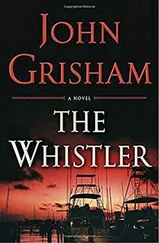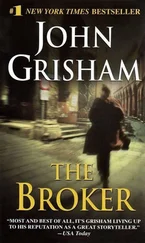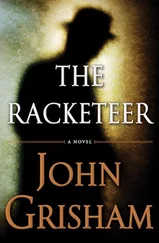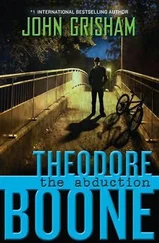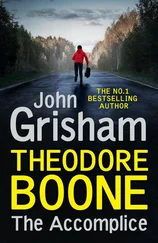He was completely off his medications.
The old man who owned the house was kind to Ron. Rent was cheap, often free. In the garage there was an ancient lawn mower with one wheel missing. Ron pushed it up and down the streets of Ada, mowing lawns for $5 and giving the money to his landlord. On April 4, the Ada police received a call from a residence on the west block of Tenth Street. The home owner informed the patrolman that he had to leave town and he feared for the safety of his family because Ron Williamson had been roaming through the neighborhood at all hours of the night. Evidently, the home owner knew Ron and was watching carefully. He told the cop that Ron had made four trips to the Circle K convenience store and two or three to Love's convenience store, all in one night. The policeman was sympathetic-everyone knew Ron was acting weird-but there was no law against walking the streets after midnight. He promised to patrol the area. On April 10, at three in the morning, the police received a call from a clerk at the Circle K. Ron Williamson had been in several times, acting really strange. While Officer Jeff Smith was making his report, the suspect showed up again. Smith asked "Ronnie" to leave, which he did.
An hour later Ron walked to the jail and rang the buzzer and announced that he wanted to confess several crimes that he had committed in his past. He was given a form for a voluntary statement and began writing. He admitted to stealing a purse four years earlier at the Coach-light, stealing a gun from a home, touching two girls on their private parts, and hitting and almost raping a girl up at Asher. But he abandoned his confession and left the jail. Officer Rick Carson followed and caught up with him a few blocks away. Ron tried to explain what he was doing at that hour, but was very confused. He finally said he was out looking for mowing jobs. Carson suggested that Ron go home, and that perhaps the mowing jobs might be easier to find during daylight hours.
On April 13, Ron went to the mental health clinic and frightened the workers. One of them described him as "drooling." He demanded to see Dr. Snow and started down a hallway to her office. When told she wasn't in, he left without incident. Three days later, The Dreams of Ada was published.
As much as the police wanted to pin the Carter murder on Ron Williamson, they simply lacked sufficient proof. By the late spring of 1987, they had little more evidence than they'd had in the summer of 1983. The hair analysis from the OSBI had finally been completed, two years after the murder. Some of the samples taken from Ron and Dennis were "microscopically consistent" with some of the hairs found at the murder scene, but hair comparisons were wildly unreliable.
The prosecution had one significant obstacle-the bloody palm print on the small section of Sheetrock cut from the wall in Debbie Carter's bedroom. Early in 1983 Jerry Peters of the OSBI had examined the print carefully and concluded that it was not from Dennis Fritz or Ron Williamson. Nor did it match Debbie Carter. It was a print left by the killer. But what if Jerry Peters had been wrong, or perhaps in a hurry, or maybe he had just overlooked something? If the print actually belonged to Debbie Carter, then Fritz and Williamson could not be excluded as suspects.
Peterson seized upon the idea of exhuming her body and examining the palm prints again. With luck, her hands were not too badly decomposed, and a new set of prints just might, if examined perhaps from a different angle, reveal information that could greatly assist the prosecution and finally bring the murderers to justice.
Peggy Stillwell received a call from Dennis Smith. He asked her to come to the police station, but refused to give a reason. She thought, as always, that perhaps there had been a break in the case. When she arrived, Bill Peterson was sitting behind the desk with a sheet of paper in front of him. He explained that they wanted to exhume Debbie's body and he needed her signature to approve it. Charlie Carter had already stopped by and signed off.
Peggy was horrified. The idea of disturbing her daughter was shocking. She said no, but Peterson was prepared for it. He pressed on, asking Peggy if she wanted the murder solved. Of course, but wasn't there some other way? No. If she wanted to find Debbie's killer and bring him to justice, she had to agree to the exhumation. After a few minutes, Peggy scribbled her signature, hurried away from the police department, and drove to the home of her sister Glenna Lucas.
She told Glenna about the meeting with Bill Peterson and the plans to dig up the body. She was actually excited by now, anxious to see her daughter again. "I'll get to touch her and hold her again," she kept saying.
Glenna did not share her enthusiasm and wasn't convinced such a reunion was healthy. And she had doubts about the people running the investigation. In the four and a half years since the murder, she had been forced to chat with Bill Peterson several times about the case.
Peggy was not stable. She had never accepted the fact that Debbie was dead. Glenna had repeatedly asked Peterson and the police to filter any news from the investigation through herself or another family member. Peggy could not handle sudden developments and needed her family's protection.
Glenna immediately called Bill Peterson and demanded to know what he was planning. He explained that the exhumation was necessary if the family wanted Ron Williamson and Dennis Fritz brought to trial for the murder. The bloody palm print stood in the way, and if it actually belonged to Debbie, then he and the police could move with urgency against Fritz and Williamson.
Glenna was confused. How did Peterson know the outcome of the reprinting if the body had yet to be exhumed? How could he be so sure that the exhumation would incriminate Fritz and Williamson?
Peggy was obsessed with seeing her daughter again. At one point she said to Glenna, "I've forgotten what her voice sounded like." Glenna was promised by Bill Peterson that the exhumation would be done quickly and be completed before anyone knew it. Peggy was at her station at Brockway Glass when a co-worker walked by and asked her what was happening over at Rosedale Cemetery, near Debbie's grave site. She left the factory, raced across town, but found only an empty grave. Her daughter had been removed.
The first set of palm prints had been taken by OSBI agent Jerry Peters on December 9, 1982, during the autopsy. At that time, the hands had been perfect, and Peters had no doubt that he had taken a full and thorough set of prints. When he issued his report three months later, he'd been certain in his findings that the bloody print from the Sheet-rock was not left by Fritz, Williamson, or the victim.
Now, though, four and a half years later, with the murder unsolved and the authorities looking for a break, he suddenly had doubts about his earlier work. Three days after the exhumation, he issued a revised report in which he concluded that the bloody print matched Debbie Carter's palm. For the first and only time in his twenty-four-year career, Jerry Peters changed his mind.
The report was exactly what Bill Peterson needed. Armed with the proof that the bloody print did not belong to some unknown killer but had been left by Debbie as she struggled for her life, he was free to go after his prime suspects. And it was important to alert the townsfolk- the potential jurors.
While the authorities claimed that the exhumation and its details were confidential, Peterson chatted with the Ada Evening News anyway. "What we found confirmed our suspicions. We were checking some evidence," he was quoted as saying. What, exactly, was found? Peterson wouldn't confirm the details, but a "source" was willing to tell all. The source said, "The body was exhumed so the woman's palm prints could be made and compared with a bloody palm print found on her apartment wall."
Читать дальше


